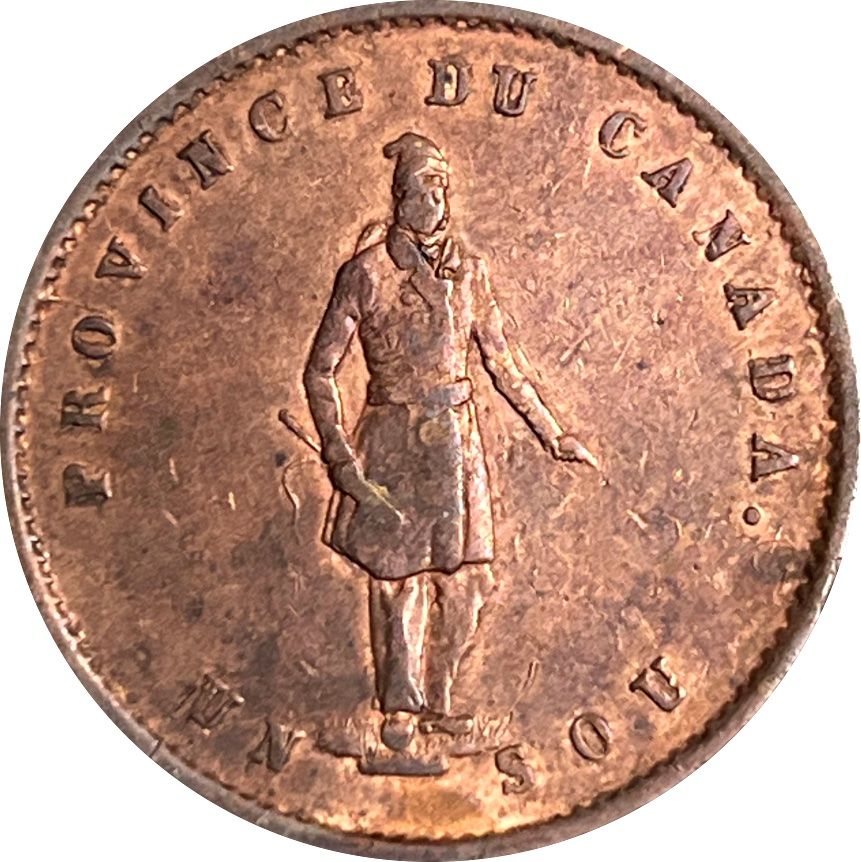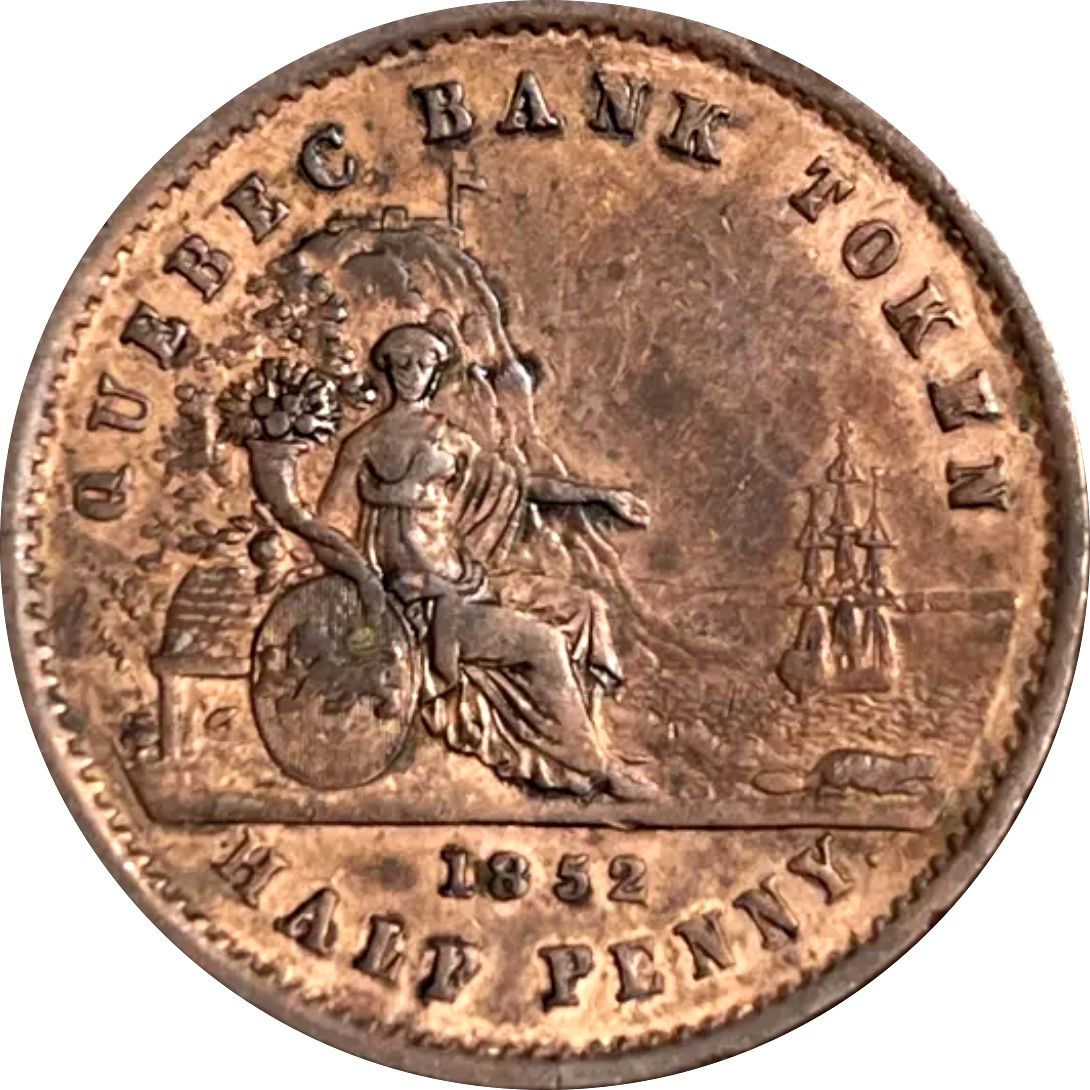Canada, United Province of ½ Penny / 1 Sou (Quebec Bank Token)
Introduction
The 1852 ½ Penny/1 Sou Quebec Bank Token stands as a testament to Canada's numismatic history, showcasing intricate designs and historical significance. This copper coin, issued in the United Province of Canada, represents a unique blend of artistry and heritage.
Historical Background
In 1852, during a period of economic expansion in Canada, the Quebec Bank issued this token as a means of facilitating trade and commerce. The coin served as a valuable medium of exchange, particularly in Quebec, contributing to the region's burgeoning economy.
Coin Images
 Obverse
Obverse
 Reverse
Reverse
Design Features
The obverse of the coin features a striking portrayal of a Canadian Habitant standing in traditional winter attire, reflecting the cultural richness of the era. On the reverse side, a seated female figure of Commerce holding a cornucopia symbolizes prosperity and abundance. The background includes a cliff with a fort flying a flag, a beehive, a sailing ship, a beaver, and a shield with a lion. The intricate details and symbolic elements make this coin a true work of art.
Technical Specifications
This 1852 Quebec Bank Token weighs 9.50g and has a diameter of 28.30mm. Crafted from copper, it embodies durability and classic beauty. The precise specifications of this coin contribute to its overall appeal and value among collectors.
Collectible Value
With its limited mintage and historical significance, the 1852 ½ Penny/1 Sou Quebec Bank Token holds significant collectible value. Numismatists and coin enthusiasts covet this piece for its unique design elements and rarity. Its market value continues to appreciate, making it a prized addition to any coin collection.
Conclusion
In conclusion, the 1852 Canada ½ Penny/1 Sou Quebec Bank Token is more than just a coin; it is a piece of Canadian history encapsulated in copper. Its intricate design, historical background, and collectible value make it a cherished item among numismatists worldwide. Owning this coin not only enriches a collection but also preserves a piece of Canada's past for future generations to admire and appreciate.

